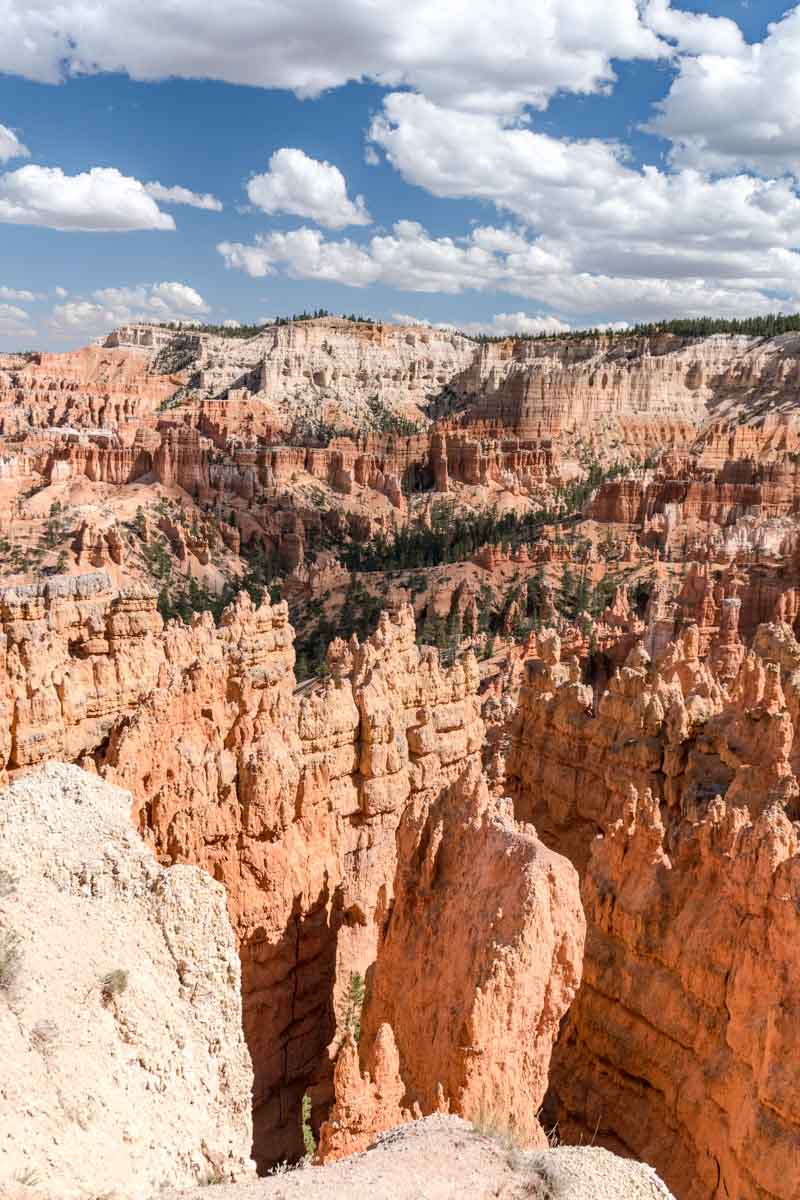

It is one of the reasons for Bryce’s amphitheaters and the high concentration of hoodoos-so many, in fact, that the area has been called the “silent city.” When temperatures rise, meltwater from the snow and ice works its way into cracks in the rock. Winter weather makes for more than a pretty picture. Iron oxide minerals have tinged the rock red, orange, and yellow.

Most of the rock pictured here is 50-million-year-old limestone from the Claron Formation. As the name implies, the view from Sunset Point is most spectacular near sunset, when the colorful rock formations are illuminated by low-angle light. On February 9, 2017, photographer and writer Ray Boren captured a ground-based photo showing snow extending into Bryce Canyon.īoren shot his photo while looking toward the southeast from Sunset Point, one of the park’s many overlooks accessible from a network of trails. When this satellite image was acquired, snow covered the plateau.
#Bryce canyon national park utah weather series#
Over time, weathering has shaped the series of hoodoo-filled amphitheaters that descend from the east side of the Paunsaugunt Plateau.Ĭompared to Zion Canyon just 80 kilometers (50 miles) away, Bryce Canyon is about 300 meters (1,000 feet) higher in elevation, and the climate is cooler and moister. Unlike canyons sculpted primarily by a river, Bryce Canyon is the result of weather-induced erosion. It shows the north-central part of the park in the vicinity of the main amphitheater. On March 9, 2017, the Operational Land Imager (OLI) on Landsat 8 captured this natural-color image of Bryce Canyon National Park. They are there to capture images of the delicate spires called “hoodoos” that rise from the canyon. But photographers who visit Bryce Canyon National Park are not typically looking for dizzying heights and depth. Arizona’s Grand Canyon, for comparison, measures more than 1,800 meters deep in places. Tightly woven, loose-fitting clothes provide additional protection from the Sun.Utah’s Bryce Canyon is not the deepest in the United States its largest “amphitheater” of naturally eroded rock drops 240 meters. Sunglasses with UVA and UVB protection significantly reduce eye damage from sun exposure. A wide-brim hat offers excellent sun protection for the eyes, ears, face, and neck.

To the extent possible, limit exposure to the direct sun during these hours. The Sun's UV radiation is most powerful between 10 a.m. Protection against sun damage is required. Note: The average daily UV index of 10 in August transform into the following instructions: A UV Index value of 8 to 10 symbolizes a very high health hazard from exposure to the Sun's UV radiation for the average person. UV indexThe average daily maximum UV index in August is 10. SunshineThe average sunshine in August is 10h. On the last day of August, sunrise is at 6:58 am and sunset at 7:59 pm MDT. On the first day of the month, sunrise is at 6:32 am and sunset at 8:37 pm. DaylightIn Bryce Canyon National Park, the average length of the day in August is 13h and 34min. SnowfallIn Bryce Canyon National Park, snow does not fall in July and August. Rain falls for 9.9 days and accumulates 2.01" (51mm) of precipitation. RainfallAugust is the month with the most rainfall in Bryce Canyon National Park. In August, the average low-temperature is 50.4☏ (10.2☌). TemperatureIn Bryce Canyon National Park, the average high-temperature in August is essentially the same as in July - a still warm 77.4☏ (25.2☌). The last month of the summer, August, is also a moderately hot month in Bryce Canyon National Park, Utah, with an average temperature varying between 50.4☏ (10.2☌) and 77.4☏ (25.2☌).


 0 kommentar(er)
0 kommentar(er)
